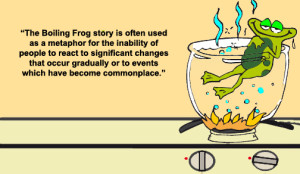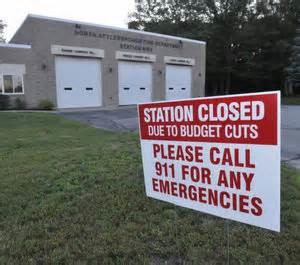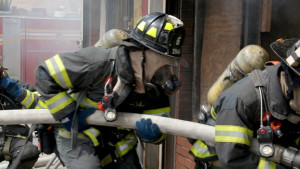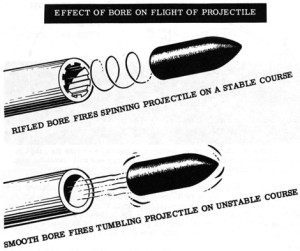By: Robert Avsec, Executive Fire Officer
This post originally appeared here in December 2015, and with the recent story by NBC News about cancer being the #1 cause of firefighter deaths, I believe this post has only grown in relevance to the discussion.
I’m sure many of you have heard the story about how you can’t boil a frog by throwing it into a pot of boiling water  (It will just right back out), but you can by putting the frog into a pot of room temperature water and then slowly turning up the heat. The frog doesn’t perceive the danger until it is too late.
(It will just right back out), but you can by putting the frog into a pot of room temperature water and then slowly turning up the heat. The frog doesn’t perceive the danger until it is too late.
The American fire service is currently sitting in the pot of water and the water continues to get hotter. The “pot” is interior structural firefighting in residential dwellings and the “heat” is coming from multiple sources that include, but are not limited to:
- Building designers, architects, and builders who have revolutionized the construction industry with lightweight construction materials and construction designs that have reduced the mass of lumber used in construction. This new construction does its primary job—resisting gravity—very well, but burns hotter and faster and is subject to degradation of its “gravity resistance” faster than housing built with full-dimension lumber before 1970.
- That same group has created floor plans with larger rooms with larger open spaces that facilitate the transfer of heat, smoke and toxic gases more quickly through the structure.
- The designers and manufacturers of interior furnishings, e.g., cabinets, furniture, floor and wall coverings, etc., have replaced wood and other natural fibers with synthetic materials and polymers, many of which are petroleum-based. This increased the fuel load in the typical residential structure substantially as well as increasing the number of known and unknown chemical compounds that are released into the structure during combustion.
So, we have structures being built that cannot stand up to fires like those of the past; interior floor designs that promote rapid fire growth and movement of the fire and products of combustion throughout the structure; fuel loads that burn 3-5 times hotter than those found in legacy housing; and those same fuel loads creating a “toxic soup” of hazardous materials during combustion.
Then those same building professionals, through their professional associations and lobbyists, pay lawmakers at the state and federal levels to pass legislation prohibiting local governments from adopting residential fire sprinkler systems, the one tool in modern fire protection that should be used to our advantage.
See Related: Why Do Home Builders Oppose Residential Fire Sprinkler Systems?
 But before the building industry takes the whole “rap”, let us not forget that our local governments have been “adding fuel to the fire” through budget cuts that have stripped personnel and equipment from fire departments. How many departments in the USA, especially volunteer-staffed organizations, are rolling the trucks to an emergency with less than three qualified personnel on board?
But before the building industry takes the whole “rap”, let us not forget that our local governments have been “adding fuel to the fire” through budget cuts that have stripped personnel and equipment from fire departments. How many departments in the USA, especially volunteer-staffed organizations, are rolling the trucks to an emergency with less than three qualified personnel on board?
So, what are we (the frog) doing? Designing better ways to put firefighters into harm’s way: better turnout gear, better SCBA, etc. Working on strategies to reduce the “almighty” response time because that’s the expectation we’ve developed in our communities (The average citizen not knowing, or if they do know not caring, that four firefighters arriving on three trucks is not going to do much to fix the problem). All of which are designed to keep firefighters going into an environment that everyone else is working to make deadlier (Not intentionally so, but more dangerous nonetheless).
 How many fire training courses for entry-level firefighters are still teaching new firefighters to move fast, get close to the seat of the fire before delivering a fire stream, and without controlling the flow path? How many departments place the greatest emphasis on those same characteristics of fire attack in their daily operations? How many departments are not addressing the chemical contamination hazards that their firefighters are exposed to every time they conduct an interior fire attack?
How many fire training courses for entry-level firefighters are still teaching new firefighters to move fast, get close to the seat of the fire before delivering a fire stream, and without controlling the flow path? How many departments place the greatest emphasis on those same characteristics of fire attack in their daily operations? How many departments are not addressing the chemical contamination hazards that their firefighters are exposed to every time they conduct an interior fire attack?
I’m not saying that firefighting is becoming obsolete, but I am proposing that we need to get out of the “pot” before we become boiled. Our approach to interior structural firefighting needs some serious restructuring lest we only see more firefighters encountering flashovers upon arrival, structures weakened to their collapse point before firefighters arrive, and firefighters developing cancers more frequently from airborne and skin exposure hazards.
Military historians universally attribute the horrendous numbers of battlefield deaths and injuries incurred by both  sides in the U.S. Civil War to one technological advance: the rifling of muskets and cannon. The rifling of firearms greatly increased both the effective distance that a round of ammunition could be delivered along with its accuracy.
sides in the U.S. Civil War to one technological advance: the rifling of muskets and cannon. The rifling of firearms greatly increased both the effective distance that a round of ammunition could be delivered along with its accuracy.
 The commanding officers in both Northern and Southern armies, most of whom were veterans of the Mexican-American War, never really did come to grips with the significance of this development. Those commanders never modified their battlefield tactics that can be seen in this weblink to meet the new challenges presented by rifled firearms and cannon. Both sides continued to launch frontal assaults against fortified defensive positions throughout the war with the terrible battlefield casualty numbers to prove it.
The commanding officers in both Northern and Southern armies, most of whom were veterans of the Mexican-American War, never really did come to grips with the significance of this development. Those commanders never modified their battlefield tactics that can be seen in this weblink to meet the new challenges presented by rifled firearms and cannon. Both sides continued to launch frontal assaults against fortified defensive positions throughout the war with the terrible battlefield casualty numbers to prove it.
 Fire & EMS Leader Pro The job of old firefighters is to teach young firefighters how to become old firefighters!
Fire & EMS Leader Pro The job of old firefighters is to teach young firefighters how to become old firefighters!